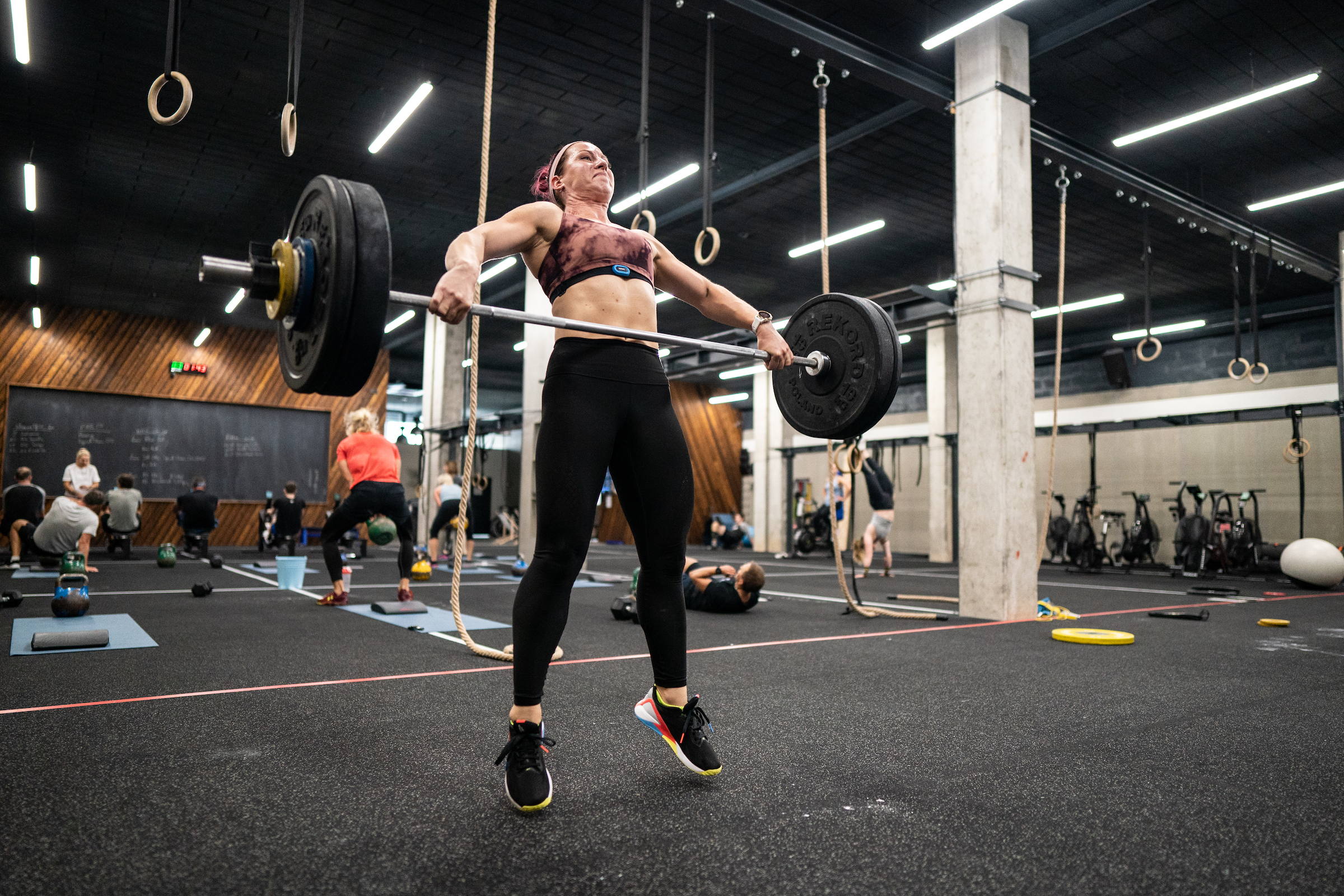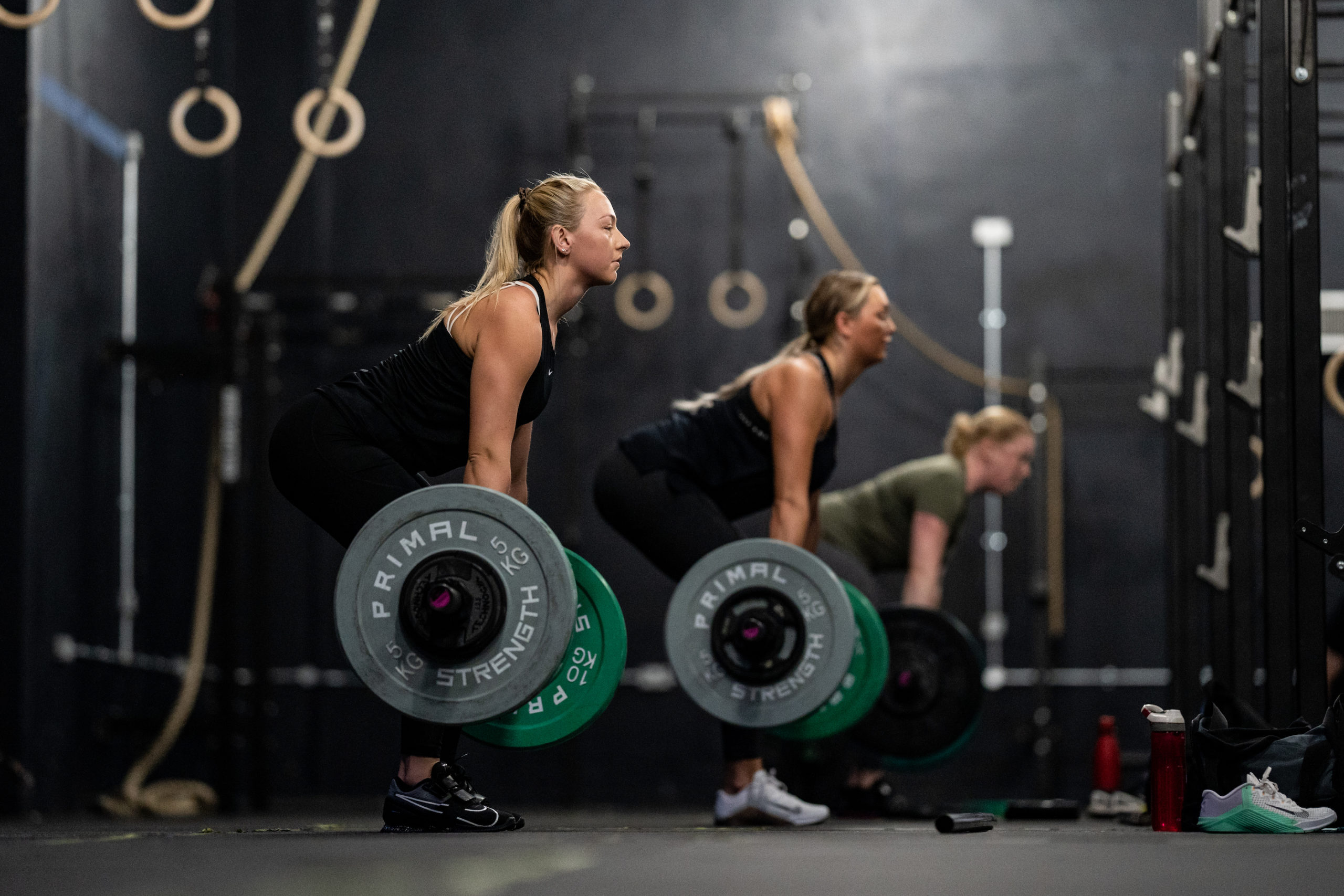I have been coaching in the CrossFit affiliate space full time since 2014 and have learned some helpful tools to progress and continually challenge myself to become a better coach. Over the past 8+ years, I have worked full time for two different CrossFit affiliates, and have worn many different hats within these gyms, including:
- Head Coach
- Foundations Program Manager
- Kids/Teens Coach
- Nutrition Coach
- Competitors Program Director
- Lesson Plan writer
- Programmer
- … and a few others.
Most recently, I opened my own affiliate in 2022 and took on the responsibility of developing my own coaches.
Over the years, I have had the opportunity to work with some of the best coaches in our space and learned firsthand from them how to become a more effective coach. There are five things, in particular, I have found along the way that have helped me become a better coach. Regardless of experience level, all coaches wanting to commit to excellence can utilize these five tools to hone their skills.
Learn From Other Coaches (The World’s Greatest Bandits)
There is a saying I once heard from a Flowmaster at a Level 1 Seminar: “CrossFit coaches are the best thieves in the world.” Upon first hearing this, I was a little confused where he was going with this phrase. To summarize the meaning behind it, there is an abundance of fantastic coaches out there with particular strengths and specialties unique to them, and we, as coaches, can learn something from every coach/trainer we encounter — regardless of their expertise.
For example, coaching cues are a dime a dozen, and none are necessarily wrong or right — an effective cue is the one that works. If you hear a cue that was effective from another trainer, or one that you deemed ineffective, that is a learning opportunity. I cannot tell you how many times I have been around other coaches and thought to myself, “I’ve never heard that cue, how did I not think of that?!” or, “I use that same cue, and it didn’t seem to work for that athlete. I should come up with a few backups for this scenario.”
This theme applies to all the categories of an effective trainer, not just seeing and correcting (presence and attitude, group management, etc.). Taking other coaches’ classes, dropping into other affiliates, or simply using YouTube and other online resources to learn from other coaches has been incredibly helpful in expanding my toolkit.
Write Lesson Plans (Failure to Plan is Planning to Fail)
We have all been (or maybe go to) the affiliate that uses the exact same warm-up every single day. While there may be occasional instances where this would be effective, the monotony and lack of creativity can blunt an athlete’s progress and a coach’s effectiveness. On the flip side of that coin, those of us who have taken a class from a coach with a confidently formulated and calculated lesson plan can appreciate how effective they can be.
When I first began writing lesson plans, I would often get stumped. What should we do for a general warm-up? Will I get punched by a member if it includes running? How long should we spend prepping each movement? Is this specific warm-up too specific?
Simply writing lesson plans regularly challenged me to become more creative and engaging, and inherently improved the structure and flow of my classes — both things that are essential for a successful class experience. Going into a class with a specific plan allows the coach to dial in what they are looking for and how to get athletes there. This includes providing specific scaling options for that day, a detailed timeline for each part of the class, an understanding of the stimulus/intended goal for the workout, etc. CrossFit’s online course, “Lesson Planning,” can be a great starting point for learning to write effective lesson plans.

Get a Mentor
One of the best things about our community is the willingness to help each other out which is ingrained in our DNA. All of us started somewhere, and most are more than happy to share insight with those who show initiative. Establish which values and attributes you associate with a high-level coach, and seek out individuals who fit the mold you envision.
Find somebody you respect and admire, and approach them for guidance. I was lucky enough to have a mentor early on in my coaching career who is one of the most experienced and highly respected coaches in the game. On Seminar Staff, we are assigned specific mentors that continually offer us feedback and guidance. This has been potentially the most helpful part of my journey to becoming a better coach. Whether you find somebody local or seek guidance from afar, there are plenty of fantastic coaches around who can and are willing to offer help. CrossFit EDU offers a unique opportunity for this with the “Coaches Development Program,” which is a real-time opportunity to get feedback and advice from the best coaches in the world.
Ongoing Education (You Don’t Know What You Don’t Know)
Coaching is a never-ending journey to gain as much knowledge and experience as possible. To offer our athletes the most impact possible, it is imperative we are on a constant objective to learn.
The Level 1 Seminar is essentially a “learner’s permit” to coaching, similar to what we give beginner drivers. It is an entry-level broad-brush introduction to the CrossFit methodology with which the coach can build a deeper and more in-depth understanding and application over time.
If you have taken the Level 2 Seminar, and if you’re anything like me, you were likely humbled by the feedback you got from the Seminar Staff trainers. The L2 is more in-depth on applying what you learned at the L1, and is full of feedback to help you move forward. The Level 3, and newly announced Level 4 (woot!) are great examples of further education you can strive for that only a select few in our community possess.
Along with these major four, there are plenty of online and specialty courses offered by CrossFit. But why stop there? As aforementioned, there are many great coaches and programs out there to learn from, and the internet exists. If you haven’t already, go back and read the CrossFit Journals dating back to 2007 — this should keep you busy for a while.

Coach! (Do the Thing)
All in all, the most effective way to get better at coaching is by doing exactly that: coach! There is a reason the best coaches around also have the highest accumulation of hours on the gym floor.
For analogy’s sake, let’s compare being a coach to being an athlete: Remember the first time you performed a squat snatch? Yeah, I try to block mine out of my memory, as well. However, upon rep after rep, and practice upon practice, you’ve likely improved both your technique and ability to move a large load a long distance quickly (I said it) tremendously — but are you completely content with your squat snatch and totally tapped out on potential? As if.
Now, let’s think back to the first time you coached a class — it wasn’t pretty, was it? Coaching is like anything else: it takes repetition after repetition, plus experience and practice to create progress. Level 4 Coaches didn’t get their ninja-like speed for seeing and correcting movement overnight. Put in the time, accept vulnerability, and understand that practice will indeed make you perfect(er).
About the Author
Connor McDonald (CF-L3) started CrossFit in 2014 in Ludington, Michigan. He has been on CrossFit’s Seminar Staff since 2021 and opened his affiliate, Bar 10 CrossFit, in January of 2022. Prior to becoming a full-time coach, McDonald served in the United States Coast Guard and played collegiate baseball. He currently resides in Georgetown, Texas.